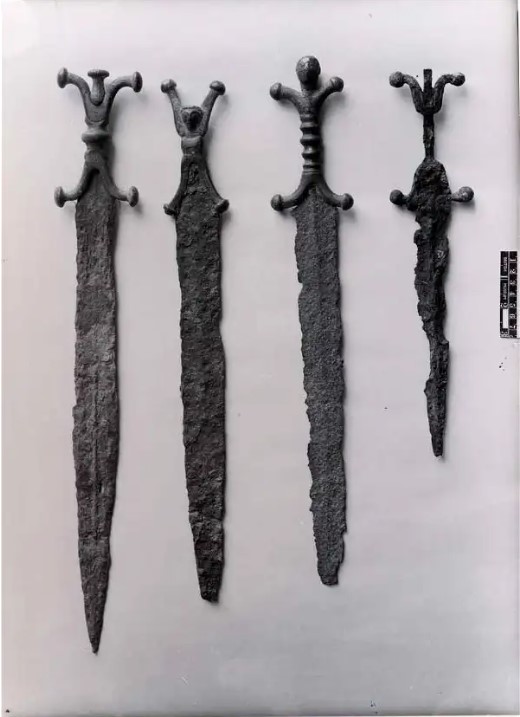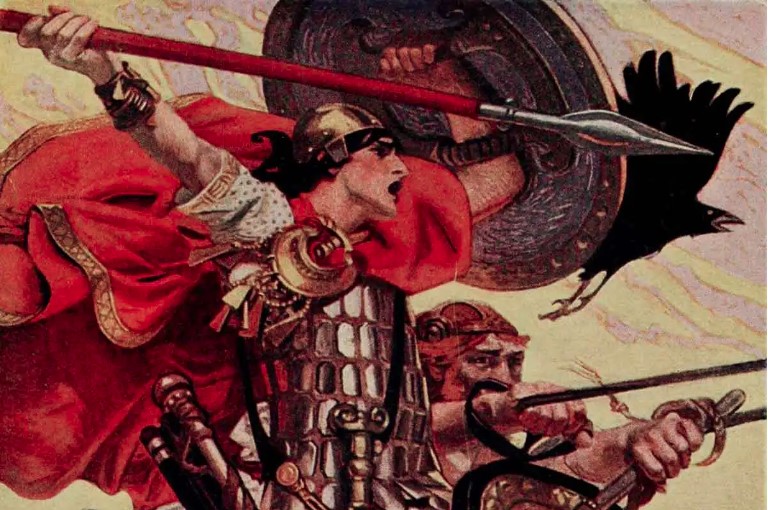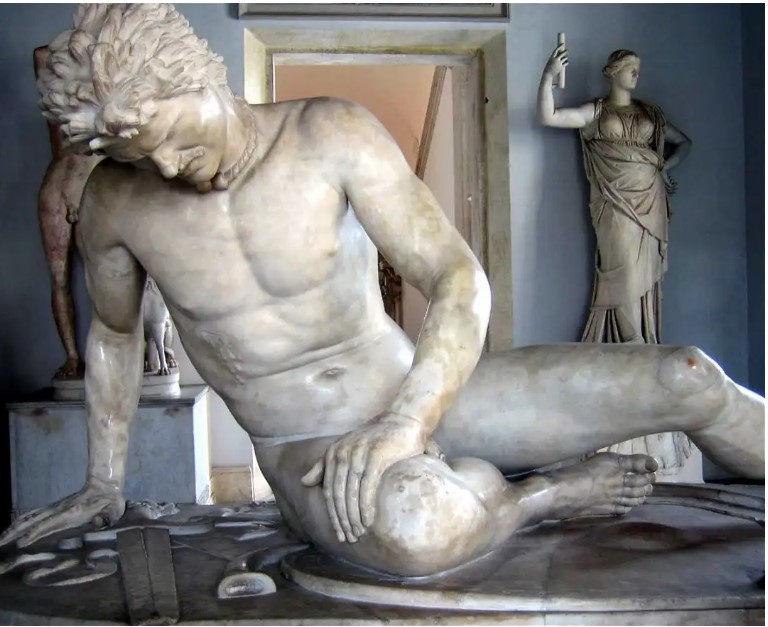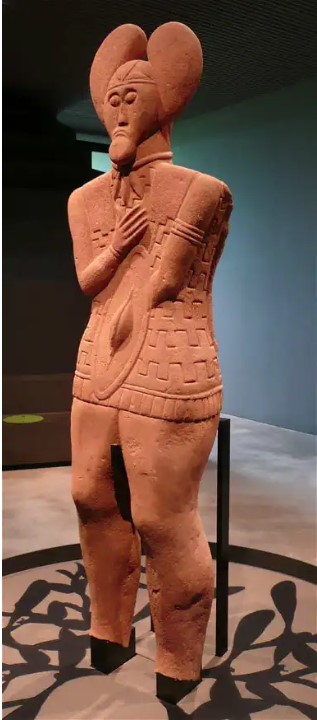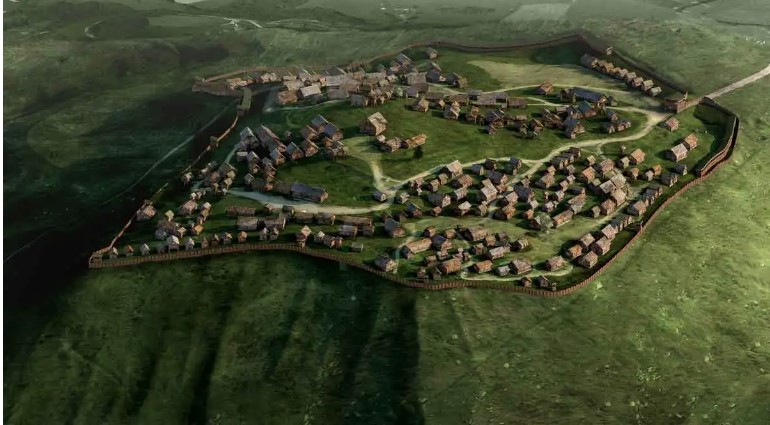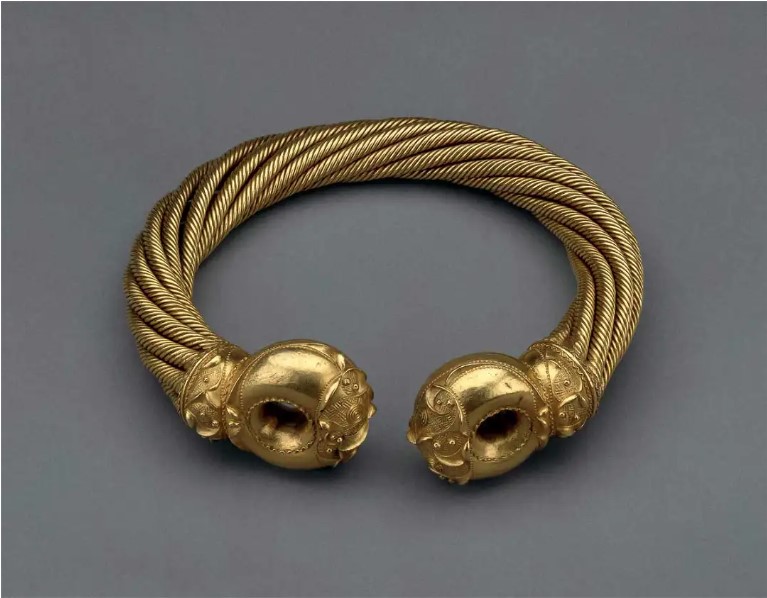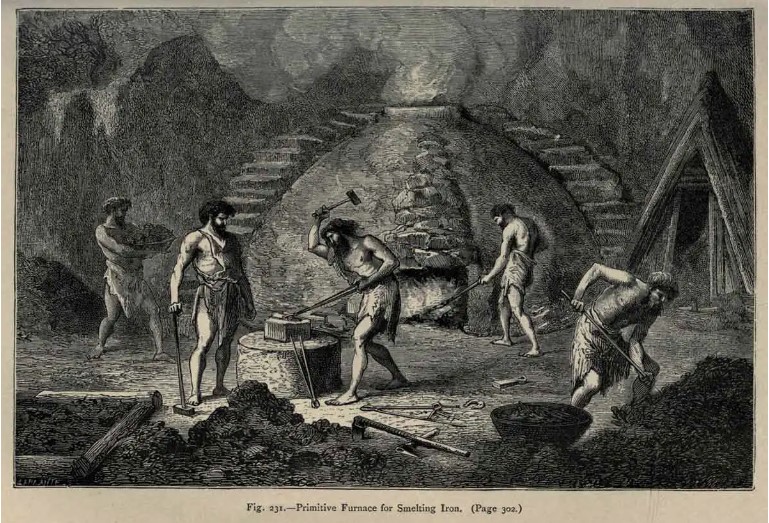Were the Celts Just Primitive Barbarians?
The ancient Celts had many significant interactions with the Greeks and Romans, both of whom undoubtedly created impressive civilizations. The Celts are often viewed as primitive savages by comparison.
Limelight Media
This perception is encouraged by the way in which the Greeks and the Romans spoke about the Celts. They tended to view themselves as superior and spoke poorly of the Celts (and other nations). However, modern archaeology and a closer examination of the written sources have revealed that the Celts were far from primitive barbarians.
The Celts and Their Way of War
Iron Swords, 200-100 BCE, British Isles, via the British Museum
The Celts were (and still are in a historical sense) famous for their behavior in battle. One common idea about the Celts is that they fought like wild animals, charging into battle in a frenzy without any real tactics or strategy. The Greek historian Dionysius of Halicarnassus described them this way:
“Now the barbarians’ manner of fighting, being in large measure that of wild beasts and frenzied, was an erratic procedure, quite lacking in military science.”
Book XIV
This description is supported by other ancient writers. For example, the Greek geographer Pausanias of the second century CE wrote the following about the Celts:
Get the latest articles delivered to your inbox
Sign up to our Free Weekly Newsletter
“They rushed at their adversaries like wild beasts, full of rage and temperament, with no kind of reasoning at all.”
10.21.2
We find similar descriptions from writers such as Livy, Florus, and Strabo. However, there is strong evidence that these descriptions are greatly exaggerated and biased.
Cuchulain in Battle, by J. C. Leyendecker, 1911, via Mythopedia
Julius Caesar provides us with many detailed descriptions of Celtic warfare. His descriptions are surely more reliable than most since he had extensive first-hand experience with the Celts. He fought against them directly in Gaul and Britain over a period of many years.
During his description of one of his many battles against the Celts, Caesar records that the Celtic troops “formed a phalanx and advanced up to our front line in very close order”. Clearly, the Celts were perfectly capable of fighting in a very organized manner when necessary.
Even when they fought in an apparently chaotic manner, there was a definite method to it. Caesar describes the unfamiliar way in which the Britons used their chariots, which certainly seemed chaotic to the Roman soldiers. Yet, Caesar saw the pattern in it and described it for us. He explained that the Celts of Britain first rode their chariots into the enemy lines to break up the order of the Roman troops. Then, warriors would jump down onto the battlefield and engage the enemy on foot while the charioteer rode out of the heat of battle. The charioteer would then wait on the sidelines until the warrior became overwhelmed. He would then retrieve him and ride away until another opportune moment. Clearly, there was a method even to the Celts’ supposedly “chaotic” mode of fighting.
The Dying Gaul, Roman copy of a Hellenistic work, 3rd century BCE, via Wikimedia Commons
Many people imagine that the Celts fought naked, or at least with essentially no armor on. This perception is rooted in the descriptions of ancient Greek and Roman writers. For example, the Greek historian Polybius from the second century BCE described the Gaesatae, a Celtic tribe of Gaul, as having naked warriors. Diodorus Siculus, a Greek historian from the 1st century BCE, also mentions Celts fighting naked. This is also mentioned by Livy, a Roman historian of the same century.
It is sometimes argued that “naked” simply meant that they did not have extensive armor. However, this argument is refuted by Polybius’ description. He specifically notes that the Gaesatae fought naked because they did not want to be impeded in battle by clothes catching on brambles on the battlefield. This statement only makes sense in the context of actual nakedness, not just a lack of armor. Therefore, it seems that some Celts really did fight naked.
Prince of Glauberg statue, 5th century BCE, via Wikimedia Commons
However, there is clear evidence that this was not an especially common practice among the Celts. Polybius himself provides us with some evidence. In his description of the battle between the Romans and the Gaesatae, he also describes two other Celtic groups involved: the Boii and the Insubres. He specifically contrasts the Gaesatae with these other two groups. He explains that the Boii and the Insubres wore “trousers and close-fitting cloaks around them”. While this is not the same as actual armor, it does show that fighting while naked was far from a universal practice among the Celts.
Diodorus Siculus also confirms that not all of the Celts fought naked. When he mentions naked Celts, what he actually says is that “some use iron breast-plates in battle, while others fight naked”. This shows that not only did they not all fight naked, but some of them actually used metal armor, just like the Greeks and the Romans.
This evidence has been confirmed by the fact that metal cuirasses have been found in Celtic lands. Also, a statue known as the Prince of Glauberg, dating to c. 500-450 BCE, depicts a Celtic warrior wearing what appears to be leather armor.
Reconstruction of a Celtic settlement in Schwarzenbach Austria, via quaint.ch
Another way in which the Celts are commonly thought of as being primitive barbarians is the nature of their settlements. They are often pictured as being little more than small, disorganized villages, with primitive huts scattered about haphazardly and very little defensive architecture. This is in complete contrast to the organized and well-built cities of the Greeks and the Romans. Those nations had grand stone buildings and massive defensive walls. There is not a great deal of written evidence regarding what Celtic settlements were like. However, archaeological evidence reveals a lot about this subject.
Maiden Castle, Iron Age site, via Visitdorset.com
During the 2nd century BCE, a type of settlement called the oppida (singular: oppidum) began to be used among the Celts. An oppidum was a type of very large hill fort which functioned as an important administrative and economic center in certain regions. Far from primitive villages, these were impressive cities, often in excess of 100 ha (1 million square meters) in size. These cities had impressive defensive structures. Just like the Greeks and the Romans, these Celtic cities often had vertical stone walls constructed according to a particular design known as murus gallicus.
Even before the emergence of true oppida, some of the hill forts of the Celts were very large, urbanized, and well-fortified. For example, Maiden Castle in Britain underwent a major expansion around 450 BCE. To put this into perspective, its new size rivaled that of the major Bronze Age Minoan settlement of Akrotiri on Thera. Archaeology has also shown that the houses within this hill fort were organized in rows.
Around 500 BCE, Crickley Hill (also in Britain) was built up into an impressive city with massive, vertical stone walls. These walls were five or six meters tall, and there were stone guard towers on either side of the entrance with a wooden walkway in between them. Clearly, this was not a primitive settlement.
The Snettisham Great Torque, c. 100 BCE, via the British Museum
The material culture of the Celts is another area in which they could easily be dismissed as primitive. The Greeks and the Romans certainly produced all sorts of works of art, architecture, and artifacts. But did the Celts? Or were they just primitive savages that made use only of what they found or what they could easily put together?
Greek and Roman literature does not speak very much about this subject. However, there are a few references to things that reveal that the Celts were far more advanced than is commonly thought. Polybius for example, who mentioned that some Celts fought naked, also states that they were “richly adorned with gold torques and armlets.”
This reveals something interesting. The Celts were capable of making gold torques and other pieces of jewelry, which involved in-depth knowledge and ability far beyond that required to put together natural items like pieces of bone. In fact, archaeological analyses of torques and other pieces of jewelery have revealed that the Celts were exceptionally skilled at metalworking.
Battersea Shield, 350-50 BCE, via the British Museum
The Celts also made larger art pieces of metalwork. A number of exceptionally beautiful shields — evidently ceremonial in nature — have been found across Europe. One example is the Battersea Shield, found in Britain and dated to the pre-Roman era. The fine metalworking ability that must have been required to make such a piece is evident.
As well as metalworking, the Celts were also capable of making life-size representations of people. The Prince of Glauberg mentioned above, is one example. This particular statue also shows strong Etruscan influence, which indicates that the Celts were capable of imitating and adapting their neighbors’ artistic styles.
Were the Celts Just Primitive Barbarians?
Illustration of a primitive furnace for smelting iron, via roman-britain.co.uk
The evidence presented in this article shows clearly that the Celts were not primitive barbarians. Although their fighting style was usually much more chaotic than that of the Romans, they were also capable of organized warfare when necessary. Their use of chariots was not random but involved a specific strategy. They did not all fight naked either. Some of them did, but many others used normal clothes, leather armor, or even metal armor.
Their settlements were not simple villages, but were often very large walled cities. And rather than being incapable of creating works of art, the Celts were exceptionally skilled metalworkers.
Hits: 0
